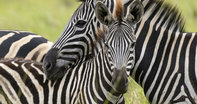
Name
Burchell’s zebra (Equus burchelli)Appearance
In comparison to the Cape mountain zebra, Burchell’s zebras have less and broader stripes on the body, stretching around the belly. Striping on the legs is less prominent.
Their rounded ears measure about 16 to 17 cm. Between the ears, the front part of the mane shapes a black tuft. The Burchell’s zebra measures 1.3 to 1.4 metres at the shoulder and weighs about 300 to 320 kg.
Burchell’s Zebra Diet
Feeding in areas of short grass, the Burchell’s zebra is largely a grazer. With the help of a strong upper lip, it gathers herbage by taking the grass between the upper lip and lower incisors before plucking its food.Burchell’s Zebra Breeding
Having no specific breeding period, foals may be born at any time of the year. Under optimal conditions, foals would be born during the summer months. A single foal is born after a gestation period of 360 to 390 days, weighing about 30 to 35 kg and weaned for eleven months.Burchell’s Zebra Behaviour
Burchell’s zebras live together in small family units of a stallion, a mare, and their foal. Attracted by watering holes and grazing areas, these family groups gather in large numbers. Non-breeding stallions congregate in bachelor groups and are usually 4 to 12 years of age. Burchell’s zebras are regarded in close association with wildebeest, baboons, and antelope, together on the grazing the plains.Burchell’s Zebra Habitat
The Burchell’s zebra prefers savanna woodland and grassland plains as its habitat in South Africa and avoids areas of dense vegetation. Being very dependent on water, it never wanders further than ten to twelve kilometres from its water source.Where they are found
Undoubtedly, the Burchell’s zebra is a member of the horse family. Being one of the two zebra species found in South Africa, the Burchell’s zebra is larger than the Cape mountain zebra and found only within savanna woodlands and grassveld, whereas the Cape mountain zebra is confined to the mountainous regions of the Cape.Field Notes
As humans have unique fingerprints, zebras have distinctive and unique markings on their bodies. The southern Burchell’s zebra has a shadowing brown stripe within its white stripes, and this characteristic is found less the further north they occur.
The Burchell’s zebra is the extinct quagga’s closest relative. Until the 19th century, quaggas were found in the southern plains of South Africa. Scientists are now using the DNA of the Burchell’s zebra in order to bring the quagga back from extinction.
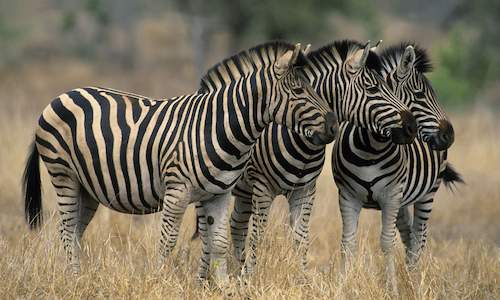 Lions and hyena prey on the adults (16% lions diet Kruger National Park)
Foals taken by lion, hyena, leopard, cheetah....
Lions and hyena prey on the adults (16% lions diet Kruger National Park)
Foals taken by lion, hyena, leopard, cheetah....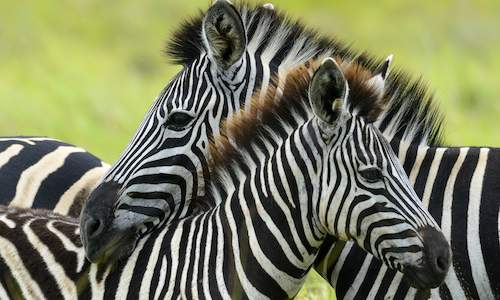 Learning about the mammals of South Africa is now so much easier for all South Africans - SouthAfrica.co.za is an excellent source of inform...
Learning about the mammals of South Africa is now so much easier for all South Africans - SouthAfrica.co.za is an excellent source of inform...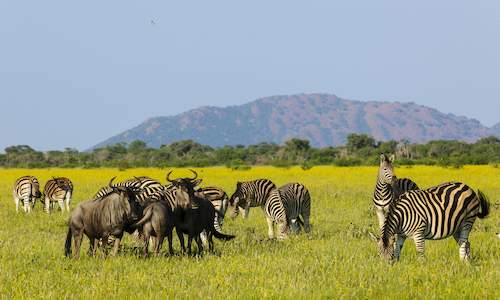 Zebra are well known for the fact that they eat grass in open country where they can keep an eye out for predators....
Zebra are well known for the fact that they eat grass in open country where they can keep an eye out for predators.... Zebra are however group-orientated animals and will attempt to rally around their weaker individuals during times of threat....
Zebra are however group-orientated animals and will attempt to rally around their weaker individuals during times of threat....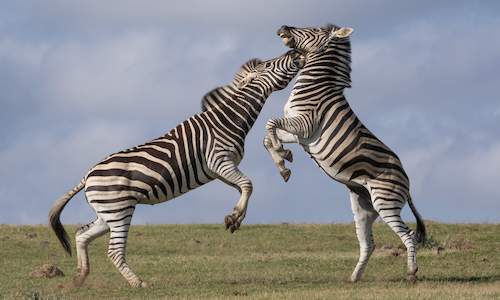 Zebra do not have territories. Instead, the defended resource of a stallion is his four to six mares and their foals....
Zebra do not have territories. Instead, the defended resource of a stallion is his four to six mares and their foals....